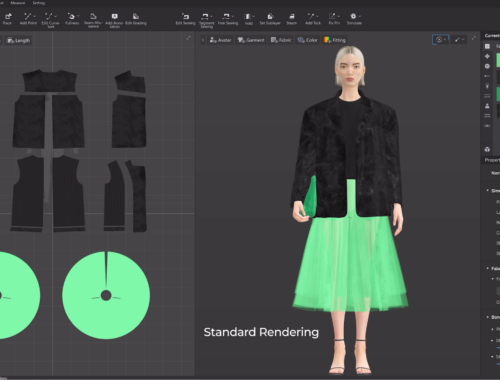The Role of a 3D Clothing Designer in Fashion Innovation
|
In the rapidly evolving world of fashion, innovation is the name of the game. As the industry embraces technology, the role of a **_3D clothing designer_** has become increasingly pivotal. These professionals are not only transforming how clothing is conceptualized and produced but also revolutionizing the consumer experience. In this article, we explore the profound impact of 3D clothing design and how it shapes the future of fashion. ### The Rise of 3D Clothing Design The integration of **3D technology** in fashion design has marked a significant shift from traditional methods. With the help of advanced software, designers can visualize their creations in three dimensions, allowing for more creativity and accuracy in the design process. This approach offers a **cost-effective and sustainable** solution, reducing the need for physical samples and minimizing waste, which is a critical concern in today’s environmentally conscious society. ### Benefits of 3D Clothing Design 1. **Enhanced Creativity**: Using 3D design tools, fashion designers can experiment with textures, colors, and patterns in a virtual environment before bringing their visions to life. This fosters a greater scope for **innovation** and originality. 2. **Efficiency and Precision**: By simulating fabrics and garment behavior, designers achieve a high level of precision, ensuring that the final product aligns closely with the original concept. This minimizes the chances of errors, saving both time and resources. 3. **Sustainability**: The fashion industry is notorious for its environmental footprint. 3D clothing design offers a solution by eliminating the need for multiple prototypes. Designers can make real-time adjustments, significantly reducing material waste. 4. **Customization and Personalization**: For consumers, the ability to customize clothes to fit their unique preferences is a game-changer. **_3D technology_** enables designers to create bespoke pieces that cater to individual tastes, enhancing customer satisfaction and brand loyalty. ### Real-World Applications Let’s look at how some industry leaders are utilizing 3D clothing design: – **Nike** has integrated 3D design in its product development process, significantly shortening the time from concept to market-ready designs. By using 3D software, they can test innovative concepts efficiently, maintaining their competitive edge. – **Burberry** is experimenting with virtual reality to present collections in a three-dimensional space, providing an interactive and immersive shopping experience for customers. This strategy not only elevates the brand’s prestige but also aligns itself with tech-savvy consumers. ### The Consumer Experience **Virtual fitting rooms** are another exciting development enabled by 3D technology. This feature allows customers to try on clothes virtually, ensuring the right fit without stepping into a store. This convenience is transforming the online shopping landscape, offering a personal touch that was previously missing from e-commerce. As more brands adopt this technology, it’s likely to become an industry standard. ### The Future of Fashion As 3D design becomes more accessible and widespread, its influence on the fashion industry will only grow. The **role of a 3D clothing designer will be crucial in driving this transformation, merging artistic vision with technological prowess. These professionals are at the forefront of creating more sustainable, efficient, and creative ways to bring fashion to the masses. In conclusion, the integration of 3D design technology represents a paradigm shift in the fashion industry. By enhancing creativity, efficiency, and sustainability, **_3D clothing designers_** are setting new standards and paving the way for future innovations. Fashion is no longer just about trends; it’s about blending art with cutting-edge technology to create a more sustainable and consumer-friendly future. |
You May Also Like

AI in Fashion: Revolutionizing Design, Shopping, and Sustainability for a Smarter Future
March 1, 2025
ユニットハウスのメリットとデメリットを徹底解説
March 20, 2025